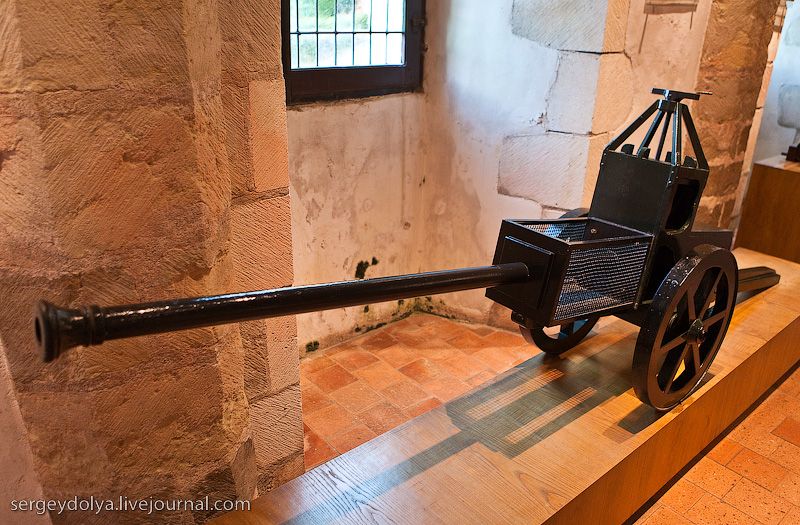|
|
Leonardo Da Vinci Castle
|
One of the effects of the Livonian Crusade in the Baltic was the introduction of stone and brick fortifications. Although there were hundreds of wooden castles in Prussia and Livonia, the use of bricks and mortar was unknown in the region before the Crusaders. Until the 13th century and start of the 14th centuries, their design was heterogeneous, however this period saw the emergence of a standard plan in the region: a square plan, with four wings around a central courtyard. It was common for castles in the East to have arrowslits in the curtain wall at multiple levels; contemporary builders in Europe were wary of this as they believed it weakened the wall. Arrowslits did not compromise the wall's strength, but it was not until Edward I's programme of castle building that they were widely adopted in Europe. The Crusades also led to the introduction of machicolations into Western architecture. Until the 13th century, the tops of towers had been surrounded by wooden galleries, allowing defenders to drop objects on assailants below. Although machicolations performed the same purpose as the wooden galleries, they were probably an Eastern invention rather than an evolution of the wooden form. Machicolations were used in the East long before the arrival of the Crusaders, and perhaps as early as the first half of the 8th century in Syria. The greatest period of castle building in Spain was in the 11th to 13th centuries, and they were most commonly found in the disputed borders between Christian and Muslim lands. Conflict and interaction between the two groups led to an exchange of architectural ideas, and Spanish Christians adopted the use of detached towers. The Spanish Reconquista, driving the Muslims out of the Iberian Peninsula, was complete in 1492.
Although France has been described as "the heartland of medieval architecture", the English were at the forefront of castle architecture in the 12th century. French historian François Gebelin wrote: "The great revival in military architecture was led, as one would naturally expect, by the powerful kings and princes of the time; by the sons of William the Conqueror and their descendants, the Plantagenets, when they became dukes of Normandy. These were the men who built all the most typical twelfth-century fortified castles remaining to-day". Despite this, by the beginning of the 15th century, the rate of castle construction in England and Wales went into decline. The new castles were generally of a lighter build than earlier structures and presented few innovations, although strong sites were still created such as that of Raglan in Wales. At the same time, French castle architecture came to the fore and led the way in the field of medieval fortifications. Across Europe – particularly the Baltic, Germany, and Scotland – castles were built well into the 16th century.
• Advent of gunpowder
Artillery powered by gunpowder was introduced to Europe in the 1320s and spread quickly. Handguns, which were initially unpredictable and inaccurate weapons, were not recorded until the 1380s. Castles were adapted to allow small artillery pieces – averaging between 19.6 and 22 kg (43 and 49 lb) – to fire from towers. These guns were too heavy for a man to carry and fire, but if he supported the butt end and rested the muzzle on the edge of the gun port he could fire the weapon. The gun ports developed in this period show a unique feature, that of a horizontal timber across the opening. A hook on the end of the gun could be latched over the timber so the gunner did not have to take the full recoil of the weapon. This adaptation is found across Europe, and although the timber rarely survives, there is an intact example at Castle Doornenburg in the Netherlands. Gunports were keyhole shaped, with a circular hole at the bottom for the weapon and a narrow slit on top to allow the gunner to aim. This form is very common in castles adapted for guns, found in Egypt, Italy, Scotland, and Spain, and elsewhere in between. Other types of port, though less common, were horizontal slits – allowing only lateral movement – and large square openings, which allowed greater movement. The use of guns for defence gave rise to artillery castles, such as that of Château de Ham in France. Defences against guns were not developed until a later stage. Ham is an example of the trend for new castles to dispense with earlier features such as machicolations, tall towers, and crenellations.
|
|









